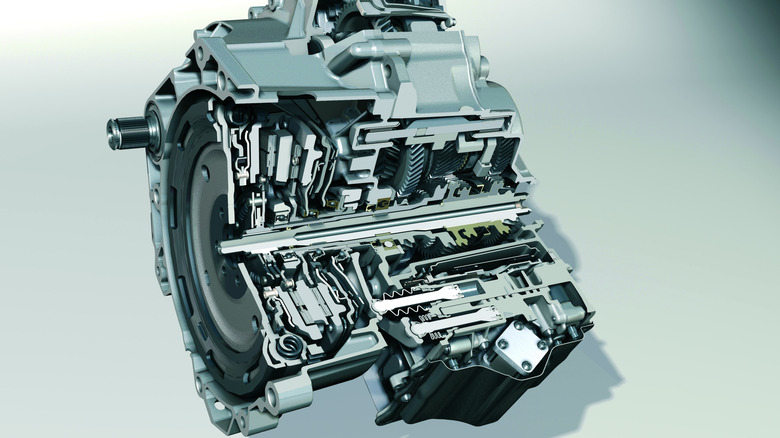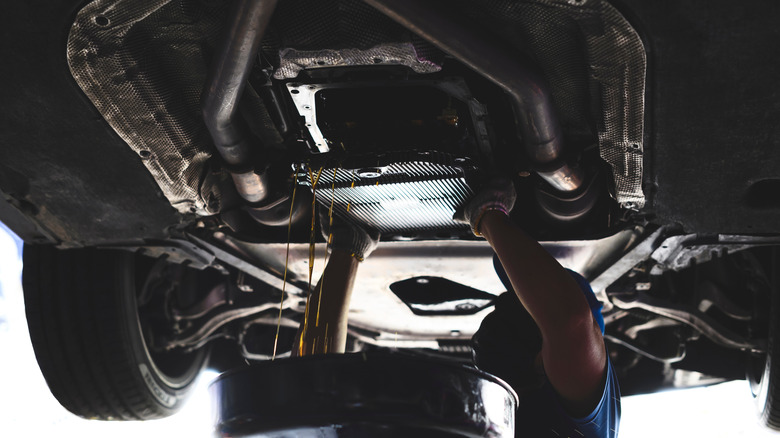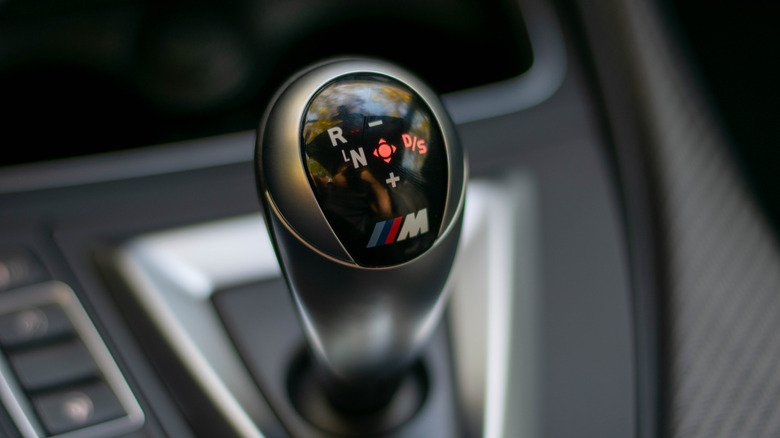What Kind Of Transmission Fluids Do DCTs Use?
A dual-clutch transmission, or DCT, functions like two manual transmissions in one package, with two independent shafts and clutches for odd and even gears. However, DCTs function similarly to an automatic, in that the driver doesn't need to change gears themselves. This raises an important question for first-time buyers: What type of transmission fluid is appropriate here? If a DCT works like a manual, but shifts like an automatic, does that mean that the fluids are interchangeable?
Since they don't require drivers to drastically change their driving (unlike moving from an automatic to a manual), many simply fold DCTs under the "automatic" umbrella. However, they're very different from a conventional automatic transmission under the hood, and thus require different fluids. DCTs use a specific type of transmission fluid, appropriately called dual clutch transmission fluid. These fluids are designed to operate within the higher temperatures and tolerances associated with DCTs, combining the strengths of both an automatic and manual transmission fluid. All the usual brands you find at most auto parts stores sell DCT fluid, including Valvoline and Amsoil. Volkswagen's DSG, or Direct-Shift Gearbox, is also a DCT, which means that Volkswagen DSG units also use DCT fluid. Here's how DCT fluids differ from typical automatic and manual transmission fluids, and how they interact with a DCT to ensure its longevity.
How DCT fluids work
Automatic transmissions use automatic transmission fluid (ATF) to provide hydraulic pressure within the torque converter and shift gears smoothly. In contrast, manual transmissions use manual transmission fluid (MTF). MTF works with the transmission synchronizer and lubricates the gears, eliminating the friction between gear changes. Some vehicles equipped with manual transmissions can accept ATF as well, provided the manufacturer recommends it. Manual transmission fluid is typically a thicker consistency and shouldn't be used in automatic transmissions.
DCT fluid combines both, owing to the unique design of dual-clutch transmissions. DCTs feature an inner and outer input shaft, with the inner shaft housed inside the hollow outer shaft. Each shaft features its own clutch and gears, representing the odd and even gears. As a car changes gear in a DCT, it'll engage each shaft in turn, meaning that all these parts need lubrication. These include the inner and outer input shafts, the output shaft leading to the driveline, the clutches, the gears themselves, and all associated working components. Having so much metal moving at once generates greater amounts of friction and heat, meaning DCTs demand high-performance fluid and require more frequent fluid changes than other transmission types.
Maintaining and driving a DCT-equipped car
Service requirements of DCTs are particularly rigorous compared to more conventional transmissions. The high-intensity environment of a DCT means that no matter how good a DCT fluid is, it'll lose its beneficial properties faster than other transmission fluids. As such, expect a tighter and more frequent maintenance schedule with a DCT-equipped car, as well as certain dos and don'ts in terms of its operation.
Many DCT-equipped cars, such as McLarens, Nissan GTRs, and Ferraris, all lean on the sportier side, utilizing the DCT's tight tolerances and lightning-fast shift times to improve performance and efficiency. However, this may also serve as a detriment to some, with certain inconveniences related to the shift logic. Namely, DCTs don't like manual downshifting while accelerating (because the car is anticipating an upshift, not a downshift). And they're not good in stop-and-go traffic, where the DCT shifts into neutral at a standstill for a few seconds. So, creeping in traffic constantly shifts the car from neutral to first, meaning extra wear and tear on the transmission compared to an automatic. If you're curious, here are some more tips on what to avoid when driving a DCT-equipped car.
However, provided you perform regular maintenance, DCTs will perform as reliably as any typical modern transmission can reasonably be expected. And, the benefits of greater fuel efficiency and higher performance will arguably outweigh their inherent expense, weight, and complexity for owners looking for the best of both worlds.


